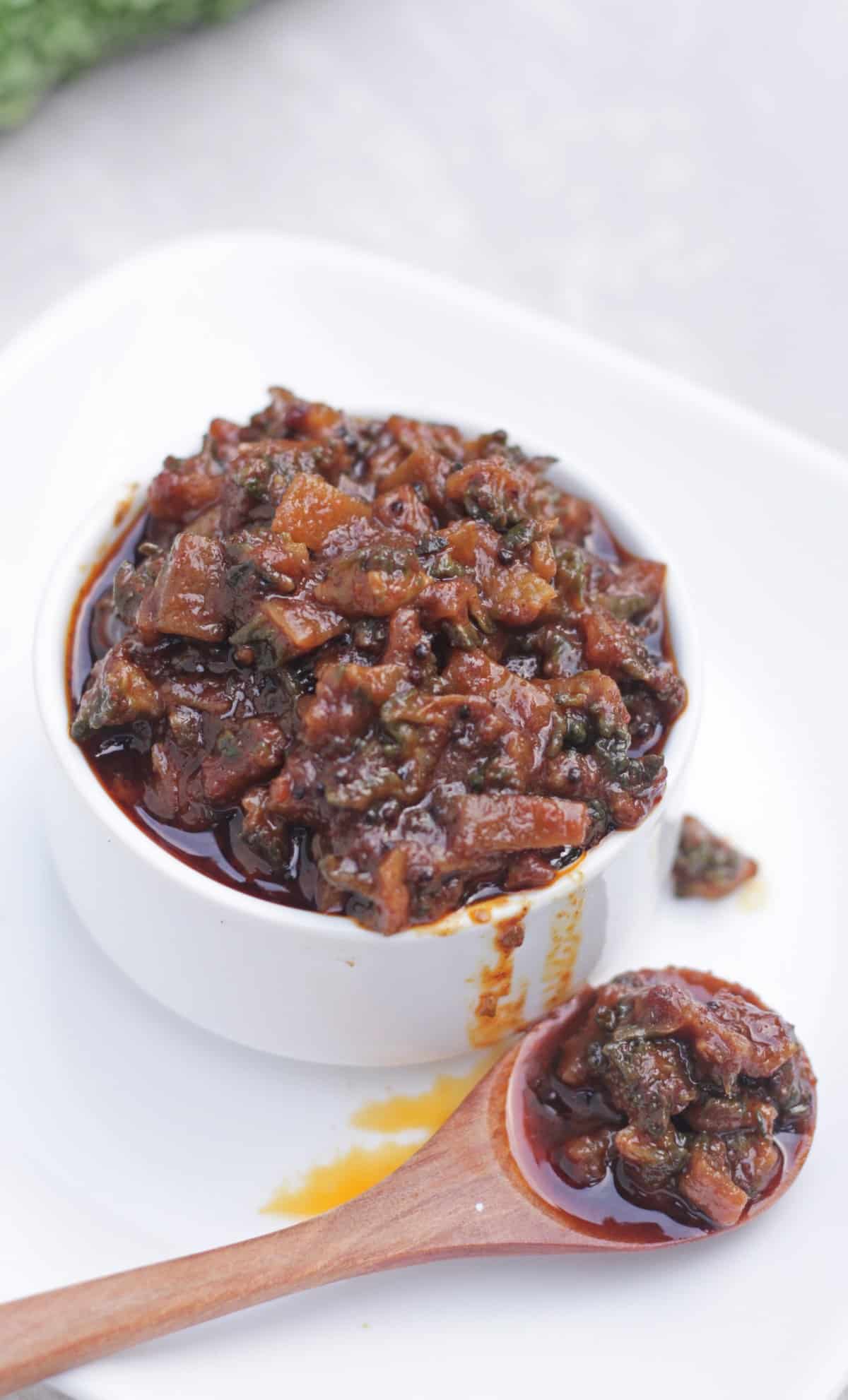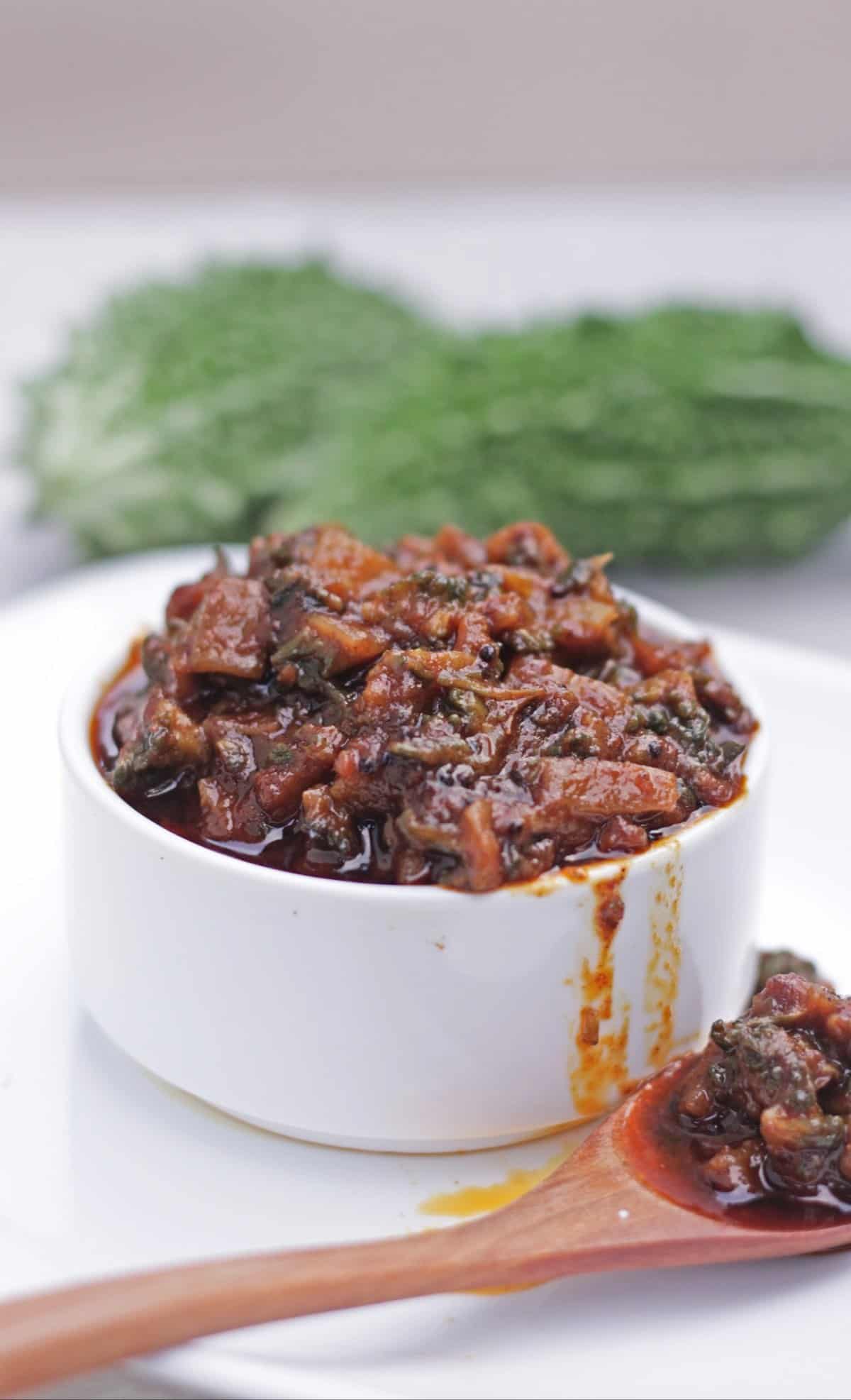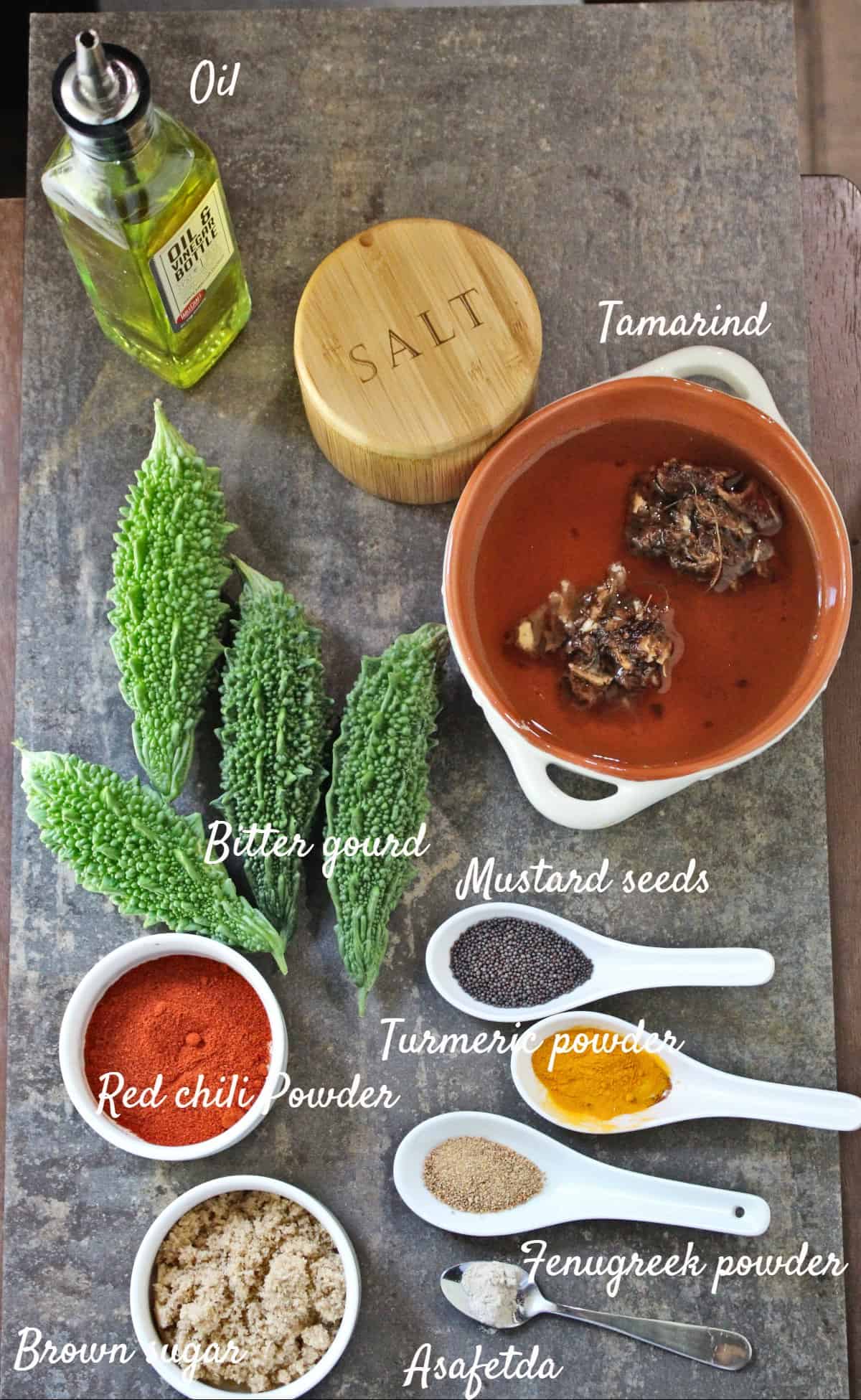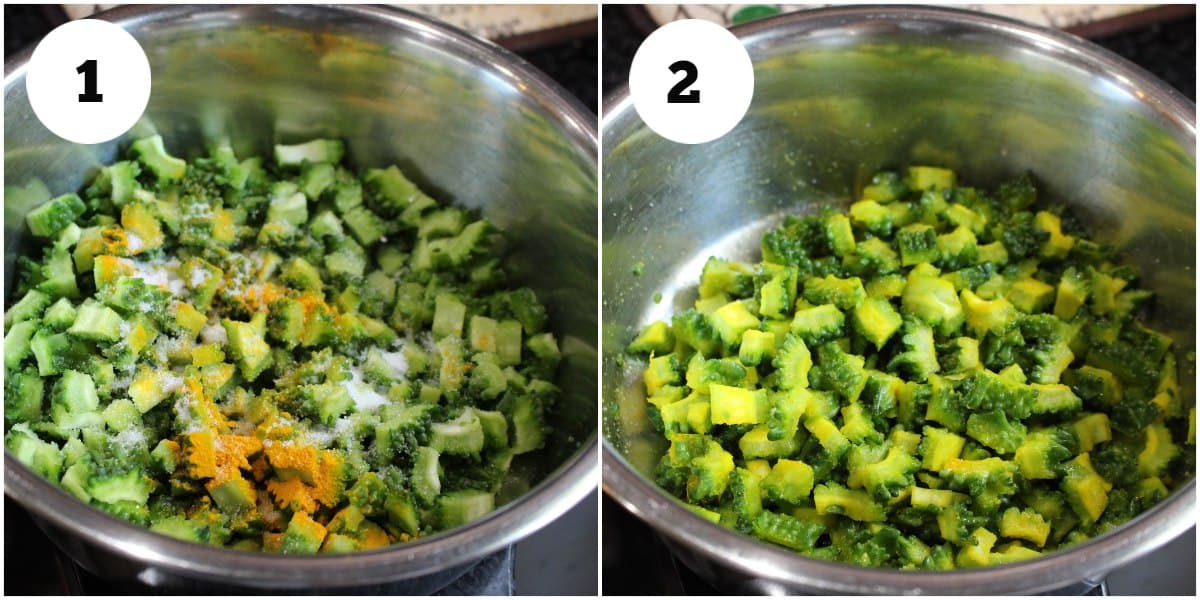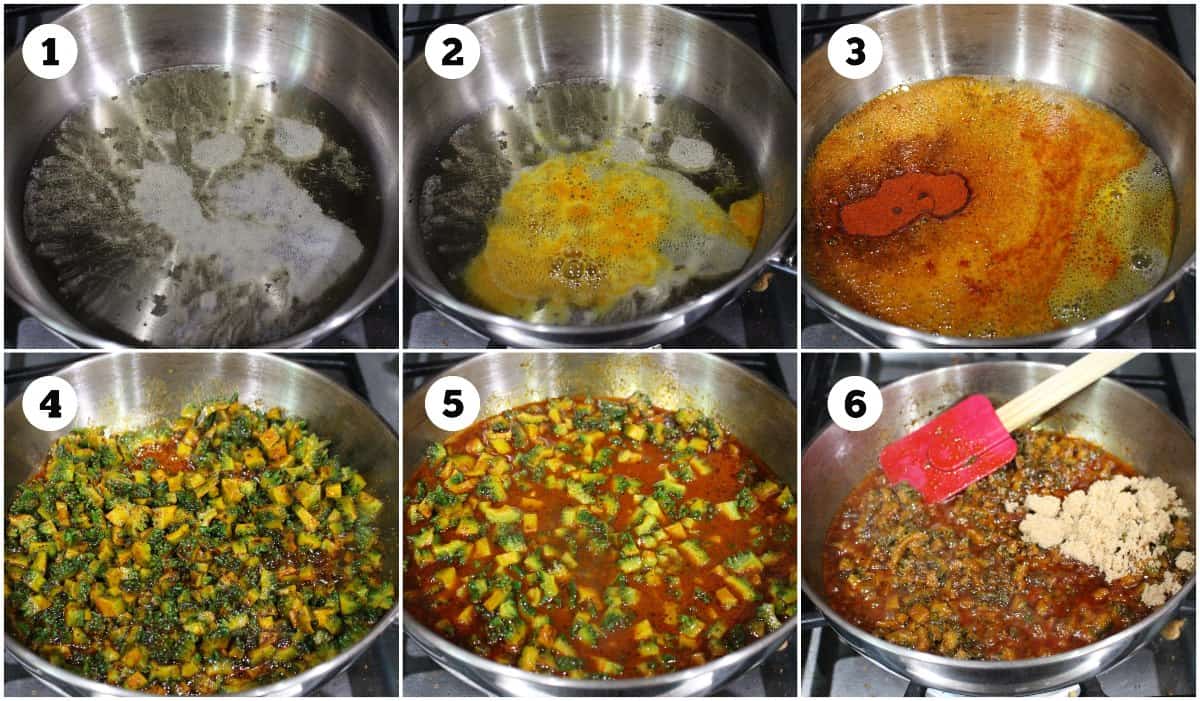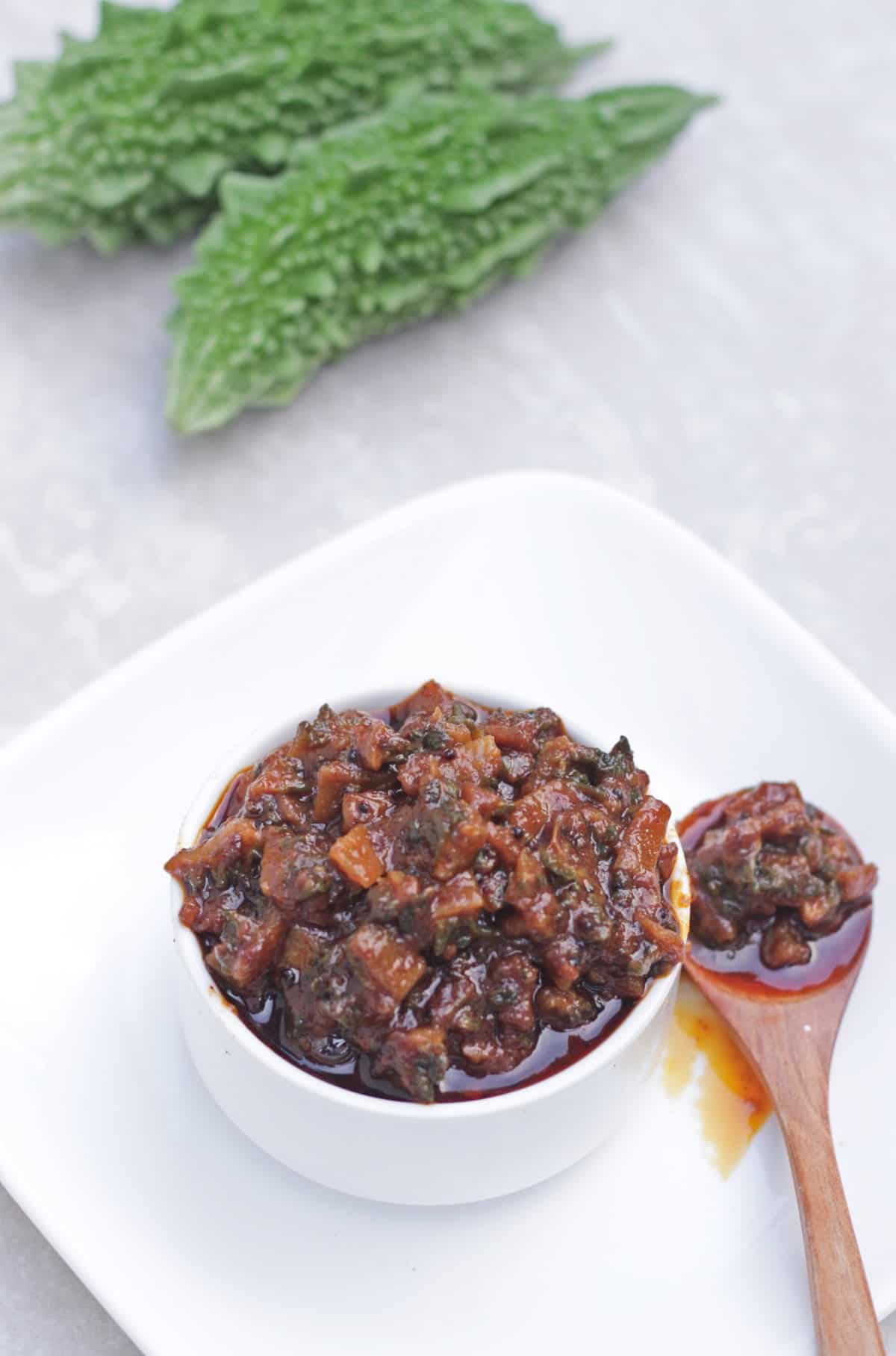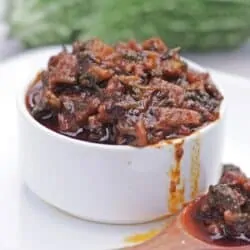Summer is a very busy time for us. The vegetables are being harvested at full force and I am constantly chopping, preserving, and cooking them. A lot of recipes are planned and made based on what we harvest from our garden. One such recipe that I make often during the summer months is this Bitter gourd pickle or Pavakkai Urukkai. It is a great way for using the summer produce for an extended period as this pickle stores well in the refrigerator for a couple of weeks. The usual recipe that I make with the bitter gourd is pavakkai Pitlai and pavakkai curry. One of the popular pickle brands carries bitter gourd pickle and that is how I got the idea to make it for the first time.
Ingredients needed
Bitter Gourd or Bitter Melon - We need tender and fresh bitter gourd to make the pickle. You can use either the Chines variety or the Indian variety. Just be aware that the Chinese variety of bitter gourd is a little less bitter than the Indian Pavakkai or the bitter melon. Spices - We need mustard seeds, turmeric powder, red chili powder, asafoetida, and Roasted Fenugreek powder.
Step-by-step process
Prep the Bitter gourd / Pavakkai - Tamarind - We can either use tamarind paste or thick tamarind extract from tamarind dissolved in hot water. Oil - Typically to make pickles, South Indians use Gingelly oil also known as sesame oil. That is what I have used in the recipe. You can use vegetable oil or any other cooking oil as well. Salt and Brown sugar/jaggery are the last two ingredients we will need. Brown sugar is an essential component as it helps counteract the bitterness to some extent. 1 . Cut the bitter gourd vertically and remove all the seeds from the center. Use a spoon to scrape the flesh and the seeds. Now chop the bitter gourd finely and wash it well. 2. To the chopped bitter gourd add about ½ teaspoon of turmeric powder and 1 teaspoon of salt and mix well. Keep it aside for about 30 mins. After 30 mins, you will notice that the bitter gourd has let out lot of water. Squeeze the water out of the melon. In another pan, heat the oil. Season with mustard seeds (1), asafoetida, and ½ teaspoon of turmeric powder (2). Also, add the red chili powder (3). Now add the chopped bitter gourd / pavakkai and saute until the vegetable softens a bit (4). Add the tamarind extract, brown sugar, and salt (5 & 6). Let it come to a boil and let the pavakkai cook entirely. Also, the bitter gourd pickle will start to thicken and come together. Add the fenugreek powder at this stage and take it off the flame. Do not cook too long after the fenugreek powder is added since it will become bitter. Let it cool down and then store it in an airtight container. Enjoy the Pavakkai Urukkai with curd rice, idli, dosa, or roti!
Sprinkle the bitter gourd with turmeric powder and salt and squeeze out the liquid to remove some of its bitterness.
Cooking it in tamarind water also helps in balancing the bitterness.
Do not skip the brown sugar/jaggery. One more factor to balance the bitterness of the vegetable.
Like any pickle, store the pickle in an air-tight and clean bottle. Always use a fresh, moisture-free spoon to remove the pickle from the jar. This helps in extending the shelf life of the pickle.
Other Recipes to make with Bitter gourd
Pavakkai Pitlai / Bitter gourd Stew - Pavakkai Pitlai is a delicious sambhar from the South Indian region made exclusively with Bitter gourd. I have added chickpeas for added texture and flavor. This is a wonderful Vegan stew / kootu made with bitter gourd and is served with rice. Bitter Gourd Chips in Air Fryer - One of our newest and most liked recipes with bitter gourd is these chips. This Air fryer bitter gourd chips will turn you into a Bitter gourd lover and you will keep coming back for more. Pavakkai Podi / Spiced Bitter Gourd Powder - One other great recipe to extend the life and use of summer-harvested fresh bitter melons / pavakkai. This podi tastes amazing with steaming hot rice and a dollop of ghee. If you made this recipe and liked it, give a star rating on the recipe card or let me know in the comments below. You could also share it with me on Instagram using #MyCookingJourney and tagging me @sandhya.ramakrishnan. You could follow me and my recipes on Facebook |Instagram | Pinterest | twitter
Recipe
